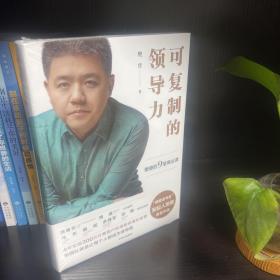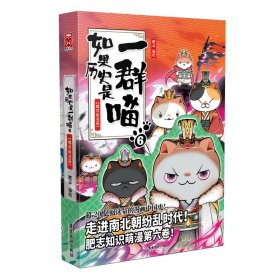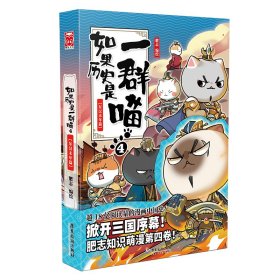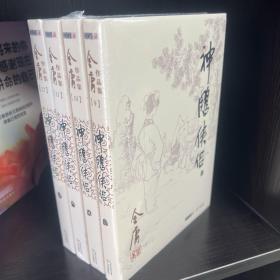
旅游消费者行为(双语版)
正版新书 新华官方库房直发 可开电子发票
¥ 43.66 7.3折 ¥ 59.8 全新
库存5件
江苏无锡
认证卖家担保交易快速发货售后保障
作者史达
出版社华中科技大学出版社
出版时间2023-08
版次1
装帧平装
货号文轩12.14
上书时间2024-12-15
- 在售商品 暂无
- 平均发货时间 14小时
- 好评率 暂无
- 店主推荐
- 最新上架
商品详情
- 品相描述:全新
图书标准信息
- 作者 史达
- 出版社 华中科技大学出版社
- 出版时间 2023-08
- 版次 1
- ISBN 9787568089401
- 定价 59.80元
- 装帧 平装
- 开本 16开
- 纸张 胶版纸
- 页数 320页
- 字数 400千字
- 【内容简介】
- “旅游消费者行为”是*高校旅游管理类专业教学指导委员会指定的四门核心主干课程之一。作为该课程的配套教材,本书旨在融合经济学、心理学和社会学等多学科理论,对影响旅游消费者决策行为的内部因素和外部环境进行了分析。同时,为了贴合实践,本书还结合旅游消费者购买活动的全过程,对购买前的沟通、购买的决策过程和购买后的反馈环节等进行了分析。本书的设计坚持以学生为本,并采用数字化的方式,在教材体例、课程资源、课后习题等各方面均为学生的学习提供*大的支持。本书不仅有助于旅游管理类专业的学生掌握旅游者在消费过程中的心理及行为产生、发展的规律,也能帮助旅游业从业者提高经营活动的科学性和服务水平。Introduction“Tourism Consumer Behavior” is one of the four core courses required by the Advisory Committee of Higher Education at the Ministry of Education on the major of tourism management. As a supporting textbook for the course, this book aims to integrate theories of economics, psychology and sociology, aiming to analyze internal factors and external environment that affect behavior of consumers in tourism. Trying not to stay away from practice, this book takes a closer look at and analyzes the consumer buying process: communication before buying, decision?making process, and feedback after buying. The design of this book is student?centered, providing as much support as possible to students in learning with a digital textbook format, digital course materials and exercises. This book is expected not only to facilitate students majoring in tourism management to gain insights into the rules that how consumers think and behave in tourism consumption but also to help people from the industry improve their business performance and service.
- 【作者简介】
- 史达,男,经济学博士,教授,博士生导师。东北财经大学萨里国际学院院长。英国曼彻斯特大学访问学者,加拿大西安大略大学访问学者。霍英东教育基金会高等院校青年教师奖获得者。先后担任国家自然科学基金项目主持人、国家社会科学基金项目主持人,中国旅游协会旅游教育分会副会长,*高校旅游管理类专业教学指导委员会委员。辽宁省旅游管理类专业教学指导委员会主任。《旅游科学》编委会成员,《旅游研究》编委会成员。在International Journal of Contemporary Hospitality Management,Journal of Hospitality and Tourism Research,Cornell Hospitality Quarterly,Journal of Destination Marketing and Management,《南开管理评论》《财贸经济》《政治学研究》《旅游学刊》等SSCI和CSSCI期刊发表论文30余篇,主持编写《辽宁省文化和旅游建设标准体系建设指南》等多项省(市)级地方标准。
- 【目录】
-
Chapter 1 Introduction /001
1.1 What is tourism consumer behavior? /002
1.1.1 The Features of Tourism Consumption /003
1.1.2 The Definition of Tourism Consumer Behavior /004
1.1.3 The Elements of Tourism Consumer Behavior /005
1.1.4 How Tourism Consumer Behavior Changed over the Time /007
1.2 How to learn tourism consumer behavior? /011
1.2.1 The Theories Apply to Tourism Consumer Behavior /011
1.2.2 The Approaches to Explore Tourism Consumer Behavior /017
1.2.3 The Factors that Influence the Tourism Consumer Behavior /020
1.3 Why the understanding of tourism consumer behavior is
important? /023
1.3.1 Government Perspective /024
1.3.2 Business Perspective /024
1.3.3 Community Perspective /025
Chapter 2 Tourism Consumer Perception /027
2.1 Tourism Consumer Sensation /029
2.1.1 The Meaning and Category of Tourism Consumer Sensation /029
2.1.2 The Characteristics of Tourism Consumer Sensation /033
2.2 Tourism Consumer Perception /034
2.2.1 The Meaning of Tourism Consumer Perception: Perception
Versus Sensation /034
2.2.2 The Characteristics of Tourism Consumer Perception /035
2.3 Impact Factors and Process of Tourism Consumer Perception /039
2.3.1 Impact Factors of Tourism Consumer Perception /039
2.3.2 Impact Process of Tourism Consumer Perception /043
2.4 Tourism Consumer Destination Perception /044
2.4.1 Tourism Consumer Perception of the Tourist Destination Image /044
2.4.2 Tourism Consumer Perception of the Tourist Destination Elements /046
2.4.3 Tourism Consumer Perception of the Travel Distance and Risk /048
2.5 Marketing Strategy Based on Tourism Consumer Perception /050
2.5.1 Brand Marketing /051
2.5.2 Tourism Experience Marketing /051
2.5.3 Embedded Advertising /052
Chapter 3 Learning and Memory /054
3.1 Learning /055
3.1.1 The Nature of Tourism Consumer Learning /055
3.1.2 Learning Theory and Application in Tourism /057
3.1.3 The Content of Tourism Consumer Learning /063
3.2 Tourism Memory /065
3.2.1 The Role of Memory in Learning /065
3.2.2 The Memory System /065
3.2.3 The Formation and Characteristics of Tourism Memory /067
3.2.4 Memory Interference and Distortion /072
Chapter 4 Motivation /074
4.1 Tourism Need /075
4.1.1 Overview of Need /076
4.1.2 Theoretical Views of Need Related to Tourism /077
4.1.3 Definition and Characteristics of Tourism Need /079
4.1.4 Models of Tourism Need /080
4.2 Tourism Motivation /082
4.2.1 Definition and Forming of Tourism Motivation /082
4.2.2 Characteristics of Tourism Motivation /084
4.2.3 Theoretical Views of Motivation /087
4.2.4 Classic Theories of Tourism Motivation /089
4.3 Influencing Factors of Tourism Motivation /092
4.3.1 Psychological Factors /092
4.3.2 Objective Factors /093
4.3.3 External Factors /095
4.4 Tourism Demand /096
4.4.1 Definition of Tourism Demand /097
4.4.2 Influencing Factors of Tourism Demand /097
4.4.3 Objective Obstacles to Realizing Tourism Demand /098
Chapter 5 Attitude and Emotion /101
5.1 Chapter Introduction /102
5.2 Attitude /103
5.2.1 Tourist Attitude /103
5.2.2 Tourist Attitude Components /104
5.2.3 The Multiattribute Attitude Model /105
5.2.4 The ABC Model of Attitudes /106
5.2.5 Tourist Attitudes and the Theory of Planned Behavior (TPB) /107
5.2.6 Types of Tourism and Tourist Attitudes /109
5.2.7 Tourism and Changing Tourists’ Attitudes /114
5.3 Emotion and Tourism /116
5.3.1 Tourists’ Emotions /116
5.3.2 Tourists’ Emotions and Destination Marketing /117
5.3.3 Types of Emotions /118
5.3.4 The Cognitive Appraisal Theory in Tourism /123
Chapter 6 Tourism Consumer Personality /126
6.1 What is the tourist personality? /127
6.1.1 The Definition of the Tourist Personality /127
6.1.2 The Features of the Tourist Personality /128
6.1.3 The Inter?structure of the Tourist Personality /129
6.1.4 The Factors Influencing Personality Formation and Development /131
6.1.5 Classification of Tourism Consumer Personality /133
6.2 The Primary Theories of the Tourist Personality /137
6.2.1 Freud’s Theory of Psychoanalysis /137
6.2.2 Jung’s Theory of Personality Types /138
6.2.3 The New Freudian Theory of Personality /139
6.2.4 The Trait Theory /140
6.2.5 The Big Five Personality Model /141
6.2.6 Plog’s Theory of Tourists’ Typology /142
6.3 The Self?concept of Tourists /142
6.3.1 The Definition of Tourists’ Self?concept /142
6.3.2 The Factors that Influence Tourists’ Self?concept /143
6.3.3 The Composition of Self?concept /144
6.3.4 Self?concept and the Symbolism of Tourism Consumption /145
6.4 Self?consistency and Travel Destination Selection /147
6.4.1 The Definition of Self?consistency /147
6.4.2 Application of the Self?consistency Theory in Tourism /149
Chapter 7 The Impacts of Technology on Tourism
Consumer Behavior /152
7.1 Technology Types and Their Applications in Tourism /153
7.1.1 Portable Devices: Audio Guides, Heritage Interpreters, Translators /153
7.1.2 Immersive Experience Equipment: Augmented Reality,
Virtual Reality, Holographic Projection /155
7.1.3 AI Robots /159
7.1.4 Big Data /161
7.2 Technology Impacts on the Tourism Industry /162
7.2.1 The Tourism Industry Perspective /162
7.2.2 The Tourism Products Perspective /163
7.2.3 The Tourist Perspective /165
7.2.4 The Tourism Practitioner Perspective /166
7.3 Technological Impacts on Tourism Consumers’Behavior at
Different Stages of Tourism /168
7.3.1 Pre?tourism /168
7.3.2 During Tourism /170
7.3.3 Post?tourism /172
Chapter 8 Reference Groups /174
8.1 The Definitions of Reference Groups /177
8.2 Types of Reference Groups /177
8.2.1 Primary Reference Groups and Secondary Reference Groups /177
8.2.2 Aspirational Groups, Associative Groups and Dissociative groups /178
8.3 Social Influence Theories /178
8.3.1 Self?concept /178
8.3.2 Self?psychology /179
8.3.3 Conformity /179
8.3.4 Existential Phenomenology /181
8.3.5 Social Comparison /181
8.3.6 Social Psychology /181
8.3.7 Other Theories /181
8.4 Reference Groups Influence /182
8.4.1 Informational Influence /182
8.4.2 Utilitarian Influence /183
8.4.3 Value Expressive Influence /183
8.4.4 Normative Influence /183
8.4.5 Comparative Influence /184
8.5 The Power of Reference Groups /184
8.5.1 Referent Power /184
8.5.2 Legitimate Power /184
8.5.3 Information Power /184
8.5.4 Expert Power /185
8.5.5 Reward Power /185
8.5.6 Coercive Power /185
8.6 Factors Determining the Influence of the Reference Groups /185
8.6.1 The Characteristics of the Product /185
8.6.2 Consumer Characteristics /186
8.6.3 The Characteristics of the Reference Groups /186
8.7 The Application of the Reference Groups in Tourism Marketing /187
8.7.1 Celebrity Effect /187
8.7.2 Expert Effect /188
8.7.3 Word?of?mouth (WOM) Communication /188
8.7.4 Key Opinion Leaders (KOLs) and Key Opinion Customers (KOCs) /189
8.8 Family Influence /190
8.8.1 The Family Life Cycle /190
8.8.2 Roles and Decision?making in the Family /192
8.8.3 Intergenerational Influence /193
Chapter 9 Culture /195
9.1 Culture and Tourism Consumer Behavior /196
9.1.1 The Meaning of Culture /196
9.1.2 The Characteristics of Culture /197
9.2 Subculture and Tourism Consumer Behavior /200
9.2.1 Overview of Subculture /200
9.2.2 The Influence of Subculture on Tourism Consumer Behavior /201
9.3 Cultural Differences and Tourism Consumer Behavior /204
9.3.1 The Measurement of Cultural Differences /204
9.3.2 The Influence of Cultural Differences on Tourism Consumer Behavior /208
9.4 Traditional Chinese Culture and Tourism Consumer Behavior /212
9.4.1 The Spirit of Traditional Chinese Culture /212
9.4.2 Brand Strategies for Tourism Enterprises Based on Chinese Cultural
Characteristics /215
Chapter 10 Marketing and Tourism Consumer Behavior /218
10.1 Tourism Products and Tourism Consumer Behavior /220
10.1.1 Understanding Tourism Products /220
10.1.2 Tourism Product Life Cycle /223
10.1.3 Tourism Product Brand /226
10.2 Tourism Price and Tourism Consumer Behavior /229
10.2.1 Understanding Tourism Price /229
10.2.2 Tourism Product Pricing /232
10.3 Tourism Distribution Channels and Tourism Consumer
Behavior /234
10.3.1 The Definition of Tourism Distribution Channels /234
10.3.2 Types of Tourism Distribution Channels and Tourism Consumer
Behavior /235
10.3.3 Tourism Intermediaries and Tourism Consumer Behavior /239
10.4 Tourism Promotion and Tourism Consumer Behavior /240
10.4.1 The Definition of Tourism Promotion /240
10.4.2 The Role of Tourism Promotion /240
10.4.3 Tourism Promotion Mix and Tourism Consumer Behavior /241
10.5 Marketing Innovation and Tourism Consumer Behavior /242
10.5.1 Internet Marketing and Tourism Consumer Behavior /242
10.5.2 Green Marketing and Tourism Consumer Behavior /243
10.5.3 Cultural Marketing and Tourism Consumer Behavior /243
10.5.4 KOL Marketing and Tourism Consumer Behavior /244
Chapter 11 Tourist Purchasing Decision, Tourism
Pre?purchasing, and Communication /246
11.1 Tourism Consumer Decision?Making Process /247
11.1.1 Need or Problem Recognition Stage /248
11.1.2 Information Search and Collection Stage /250
11.2 Communication /252
11.2.1 Designing Persuasive Messages /254
11.2.2 The Impact of Technology on Tourism Consumer Communication /254
11.2.3 Online Consumer Behavior /258
Chapter 12 Tourism Experience /265
12.1 The Meaning and Type of Tourism Experience /266
12.1.1 The Meaning of Tourism Experience /266
12.1.2 The Type of Tourism Experience /267
12. 2 The Quality of Tourism Experience /271
12.2.1 The Connotation of Tourism Experience Quality /271
12.2.2 The Influencing Factors of Tourism Experience Quality /273
12.3 Authenticity, Embodiment and Risk Perception of
Tourism Experience /277
12.3.1 Tourism Authenticity /277
12.3.2 Embodied Experience /278
12.3.3 Risk Perception /279
12.4 The Strategy of Tourism Experience Marketing /280
12.4.1 Focus on Destination Placeness /281
12.4.2 Highlight Local Symbols /282
12.4.3 Strive for Themed Experiences /283
12.4.4 Enhance the Interaction /284
12.4.5 5G VR Tourism Experience /287
Chapter 13 Post?purchase Behavior of Tourism Consumer /289
13.1 Tourism Consumer Satisfaction /290
13.1.1 The Concept of Tourism Consumer Satisfaction /290
13.1.2 The Characteristics of Tourism Consumer Satisfaction /291
13.1.3 The Measurement of Tourism Consumer Satisfaction /292
13.1.4 Factors Influencing Tourism Consumer Satisfaction /294
13.2 Tourism Consumer Loyalty /296
13.2.1 The Concept of Tourism Consumer Loyalty /296
13.2.2 The Measurement of Tourism Consumer Loyalty /297
13.2.3 The Classification of Tourism Consumer Loyalty /300
13.2.4 Factors Influencing Tourism Consumer Loyalty /303
13.2.5 User Generated Content (UGC) /308
13.3 Tourism Consumer Complaints /309
13.3.1 The Concept of Tourism Consumer Complaints /309
13.3.2 The Types of Tourism Consumer Complaints /310
13.3.3 The Reasons of Tourism Consumer Complaints /312
点击展开
点击收起
— 没有更多了 —
















以下为对购买帮助不大的评价